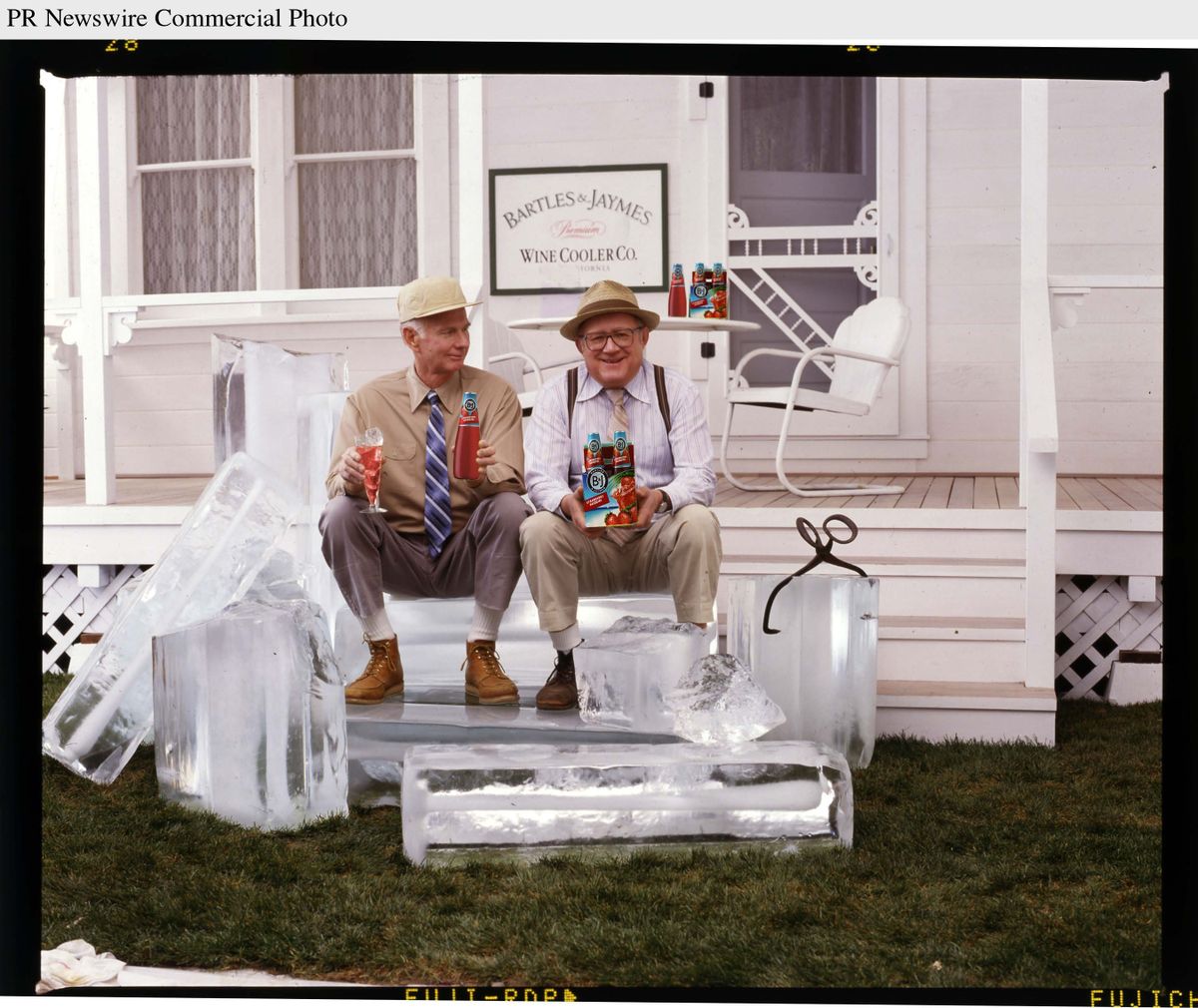Wine coolers making comeback with fresher look, better ingredients

For drinkers of a certain age, Bruce Willis is synonymous with wine coolers. Back in the mid-to-late 1980s, the actor was best known as the spokesman for Seagram’s Golden Wine Cooler. In splashy primetime TV ads, he sashayed through neon-lit New York City; flirted with a new bride (and in another commercial, Sharon Stone); and performed with a posse of blues musicians and a shaggy dog on a rural porch. “It’s wet and it’s dry,” he’d say at the end of each.
At the time, wine coolers were wildly popular, claiming 20% of all wine consumed in the U.S. However, their trajectory didn’t follow that of Willis’. In 1991, shortly after he’d reprised his role as John McClane for the second “Die Hard” movie, Congress introduced an excise tax. The law quintupled the tax on wine from 17 cents a gallon to $1.07 per gallon, making blending wine a bad business model.
Most brands switched to malt-based cocktails (simply calling them “coolers” as they no longer contained wine), which were cheaper but a far cry from the original. Eventually, the drink fell so far out of fashion that now when you Google “wine cooler,” the search page is populated with wine refrigerators. In recent years, however, a new generation of ready-to-drink, wine-based cocktails, similar to the original California Cooler, have been cropping up in bars and liquor stores across the country.
Just don’t call them wine coolers. “I wanted to make something delicious that’s low in alcohol and refreshing, almost like the wine coolers of the 1980s,” said Jordan Salcito of her wine cocktail brand Ramona. While Ramona is made from sparkling Italian wines and organic fruit juices, including ruby grapefruit, blood orange and Meyer lemon, similar to those original wine coolers, Salcito doesn’t consider it one. She maintains that it’s a spritz.
The government classifies all wine-based cocktails under “wine product” (versus a malt product) for taxation purposes. While recipe books and mixology websites might define a wine cooler as a blend of wine and fruit juice (or sweetened soda), there’s no legal definition, so brands are able to self-identify as a cooler, a spritzer, a spritz, a sangria and beyond.
Most, however, shy away from calling themselves a cooler largely because of the negative connotations surrounding the quality of those of yesteryear. “Bartles and Jaymes and Seagrams kind of cheapened the category by using malt beverages instead of wine,” said Karl Ziegler, managing partner for Roseade Spritzer, a brand whose wine-based cocktails are made from rose and lemonade. “People want to elevate their drink from the cooler stigma. At least where it ended up, not where it started.”
Similarly, when Portland Sangria was trying to land on a name for their cocktail made of wine, juice, herbs and fizz, they polled patrons at Enso Winery where the brand started asking if the drink felt more like a cooler, spritzer or sangria. “We also asked people what their perceptions of those three things were, and most people had a really negative connotation with the idea of wine cooler,” winemaker Ryan Sharp said.
The desire to not be confused with the last version is understandable: While the wine-based drinks of the 1980s and those of today fall within the same family, they’re more like distant cousins than siblings.
“It’s a trend like fashion in a sense – how hugely popular styles can be refreshed and refined to reflect the current moment,” said Terry Wheatly, president of Vintage Wine Estates, the company behind Gaze Wine Cocktail, adding that consumers love the next big thing.
Right now, consumers’ demands for wine-cocktails mirror that of other ready-to-drink cocktails: convenient, low-alcohol and low-calorie. The current offerings are largely served in cans and have single-digit alcohol percentages. “They’re things you might want to have by the pool or bring to a picnic or take on a hike or camping,” said Hoxie Wine Spritzer founder Joshua Rosenstein. “Bottles of wine just don’t lend themselves to that.”
Before the excise tax, wine coolers were made of cheap wine, sugary fruit juices and mysterious additives. Today, the wine-based cocktails use better-quality products and have a straightforward ingredients list. Ziegler noted that part of the reason former wine cooler brands did so well was because they “were some of the cheapest things you could buy to drink.”
Now that’s not necessarily the case. Ramona retails for $20 per four-pack of 250-ml cans, while Hoxie, another popular brand, sells eight packs of the same sized can for $28.
“I think there’s a cultural shift in that people would rather have fewer of these really good things than a whole bunch of something lesser,” Sharp said, adding that part of the resurgence is because millennials are more willing to pay to try something different as well as share those moments with others on social media.
While this generation might not have a crooning and grooving Bruce Willis to sell them boozy bevvies, they do have influencers out on envy-inducing adventures sharing their brightly colored cans. Wheatly concurs, “The influence of social media on the category can’t be understated.” And, at least with Ramona, there’s also a tagline to accompany the message: “It’s wine, but cooler.”